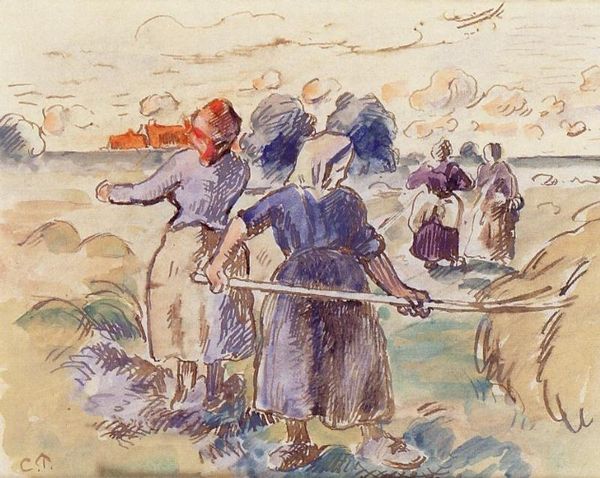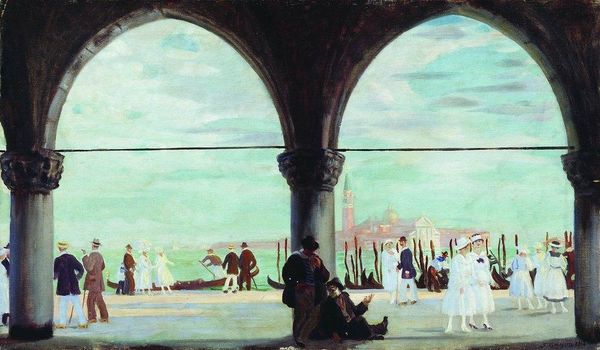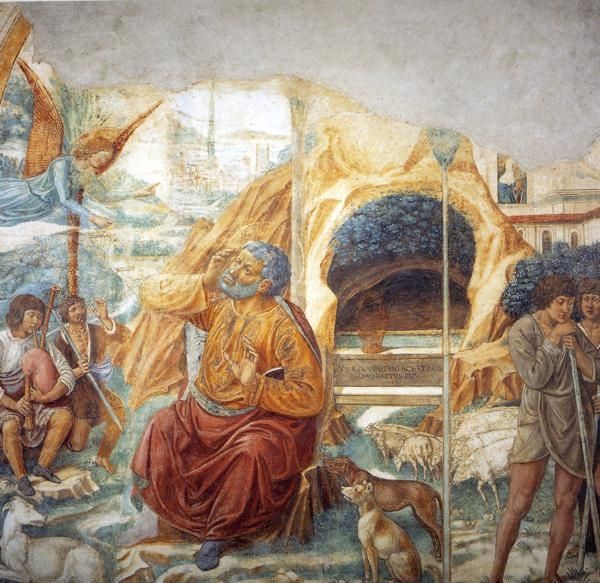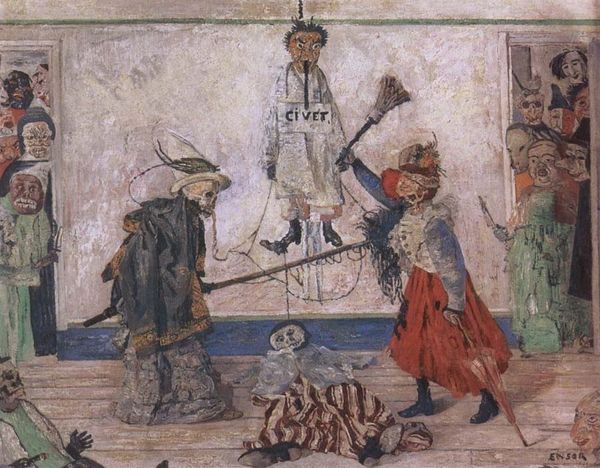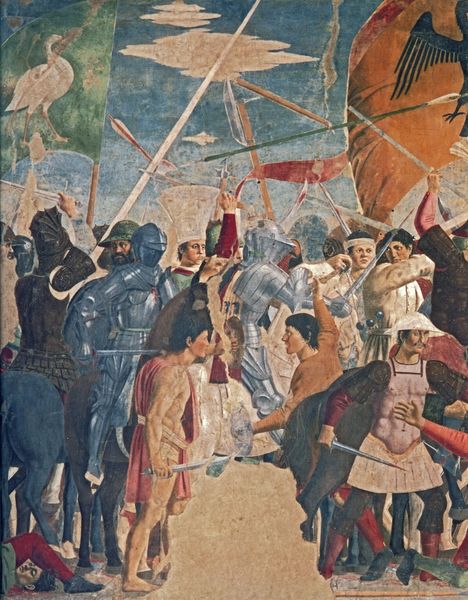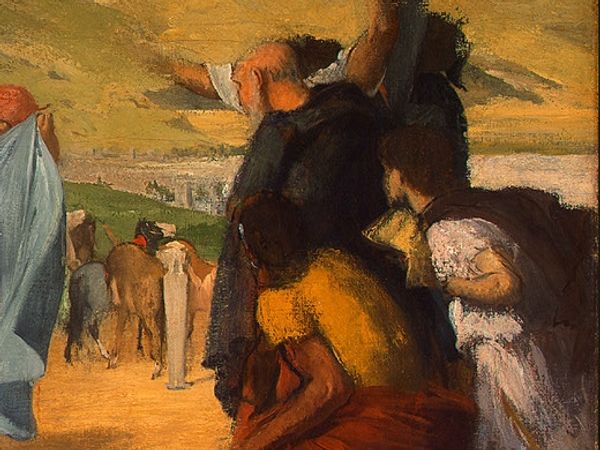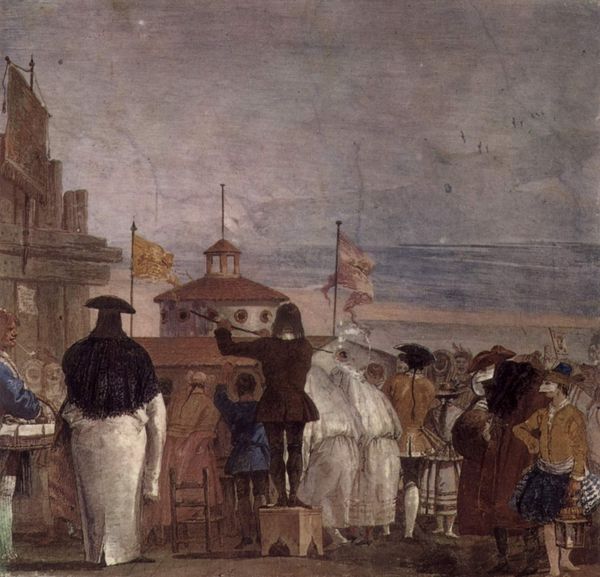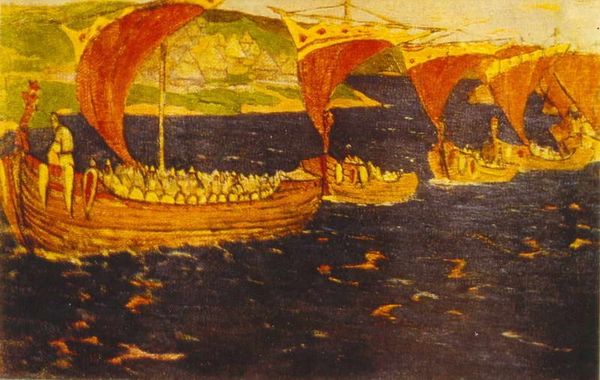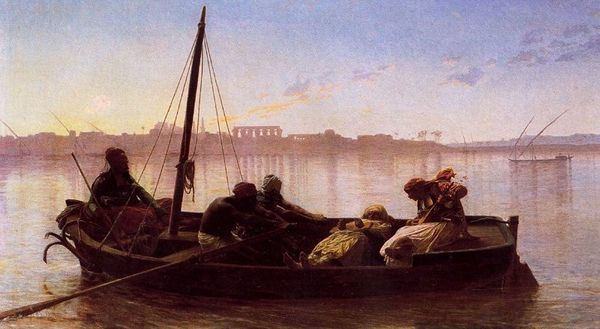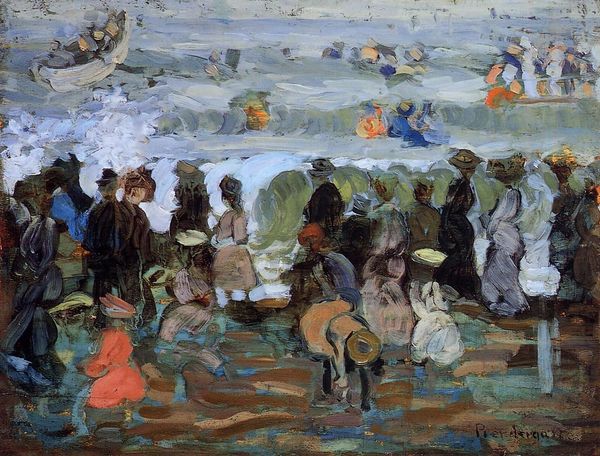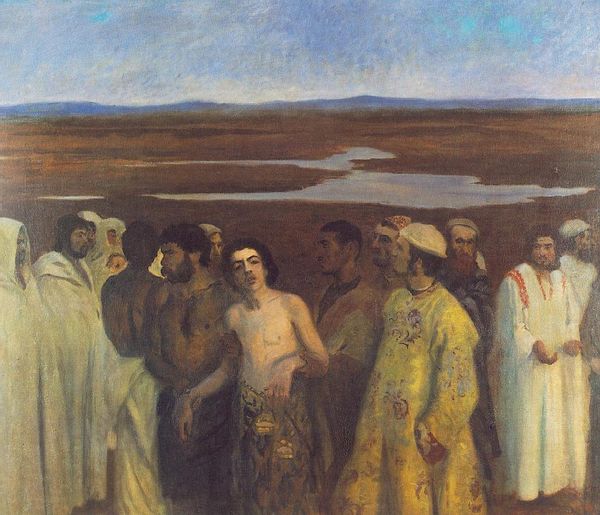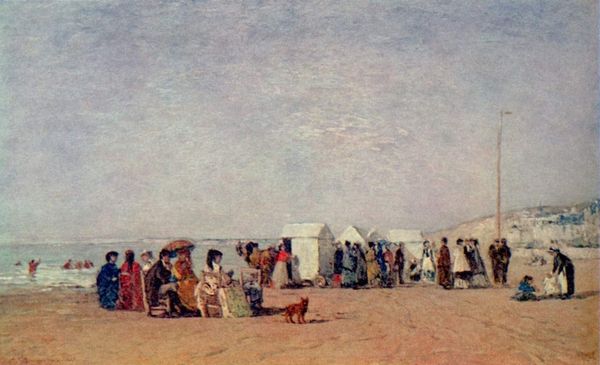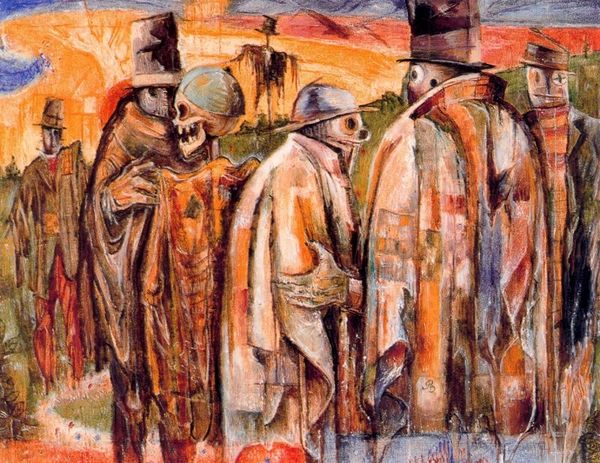
Copyright: Public domain
Curator: Giovanni Domenico Tiepolo’s painting, "The New World," created in 1797, offers a glimpse into 18th-century Venetian life, presented as a panorama of social observation. What’s your initial read on this one? Editor: My first thought goes to the performative nature of observation here. Everyone is looking—straining, almost—and that act of looking, and who gets to look, feels immediately central to the painting's meaning. It's almost like they are looking to an spectacle. Curator: Precisely. It's not just a candid snapshot. Tiepolo is making a comment on spectatorship itself. If we consider the period, the late Venetian Republic was dealing with immense social and political change, the promise of “new worlds” both exciting and disorienting for its citizens. This gathering, literally at the edge of the city near the lagoon, highlights the public's intense interest in these changes and discoveries. Editor: That disorientation makes sense, looking at this image from a contemporary lens, as if their collective gaze represents not just curiosity but also a degree of anxiety or longing. The class dynamics, visible in their varied clothing, feel important. It strikes me how certain groups have the power to 'see' more literally and figuratively, standing atop crates to gain vantage points. Who are the individuals in the front and in the back of the audience and why? Curator: Indeed. The man standing on the small pedestal pointing with what appears to be a stick draws the viewer’s eye. His elevated position implies knowledge, control even, but is it real or an illusion? Are the ones who look at him aware of his intentions or point of view? I believe Tiepolo challenges viewers to confront their own positions, urging the public to become not just watchers but participants in shaping the course of Venice as well as Europe. Editor: Thinking about that, I can't ignore the figures clustered at the painting's left; some of them are turned around to engage each other in dialogue or sharing what is happening. They serve a function that's distinct, like a little representation within representation. It feels like commentary. I see Tiepolo pushing beyond simple documentation toward critical reflection, as he prompts us to not just passively observe art but to actively question society, who's doing what, and, mostly, for what? Curator: It is almost an exercise in awareness. Ultimately, it becomes clear, viewing "The New World", that art does not hold the solutions to political or social disarray but allows one to see oneself in relation to progress, history, and, more so, other humans. Editor: I concur. There is no true way of "seeing the new world," the canvas expresses. The new world's meaning is fluid, co-constructed through dialogue and subject to shifting perspectives. What each witness actually extracts or contributes may never find consensus.
Comments
No comments
Be the first to comment and join the conversation on the ultimate creative platform.
